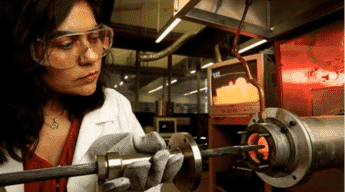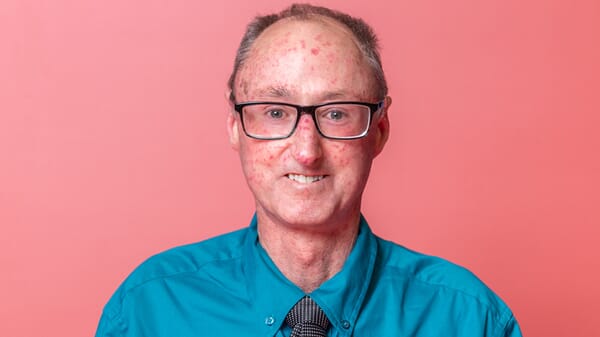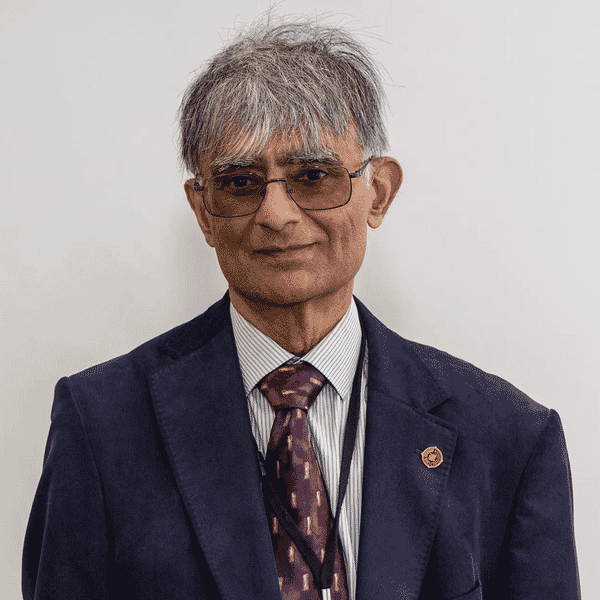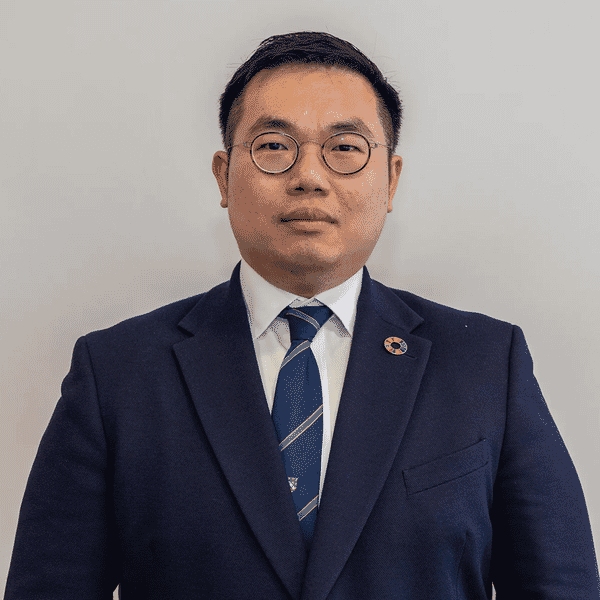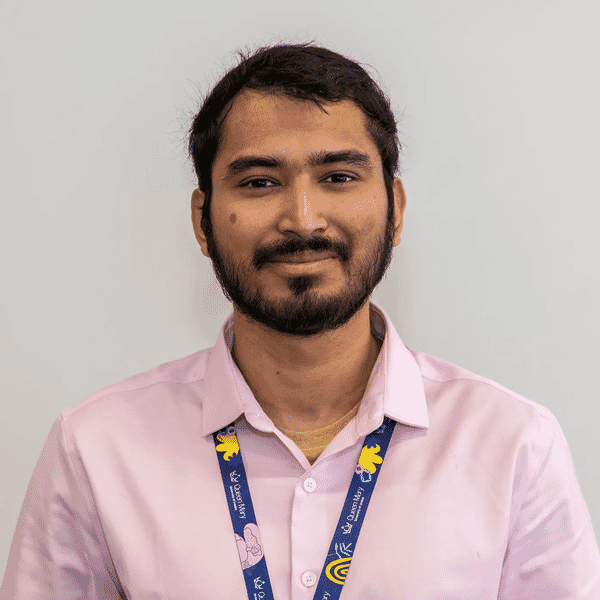1/ Can you introduce yourself and provide an overview of your academic background and research interests?
I completed my B.Tech. degree in Metallurgical and Materials Engineering from Jadavpur University, Kolkata, India, in 2016. Following that, I pursued my M.Tech. at the prestigious Indian Institute of Technology Kharagpur, also situated in West Bengal, India, and graduated in 2018. Subsequently, I secured a position as a researcher at Tata Steel R&D in 2018.
My primary research interests involve the development of novel steel products and coatings. Additionally, I am deeply invested in investigating failure analysis, corrosion mechanisms, wear and abrasion phenomena in steel and coatings, as well as exploring high-temperature treatments for steel and coatings. These pursuits align with my commitment to advancing the understanding and applications of metallurgical and materials engineering in the steel and other industrial application of steel.
2/ What motivated you to join this research project with Dr Harry Bhadeshia and Dr Chinnapat Panwisawas, specifically in collaboration with Molycop?
As a Metallurgical and Materials Science Engineer, my professional aspirations have always gravitated towards the core metallurgical domain. Upon securing a position as a researcher in the steel industry, my aim was to immerse myself in the realm of steel research and its practical applications. The current research project I am engaged in entails a comprehensive study of high carbon steel, focusing on aspects such as heat-treatment and mechanical properties evaluation including wear resistance, hardness, abrasion resistance and impact toughness.
Moreover, this project offers a unique opportunity for me to delve into finite element modelling and to develop predictive models for microstructure analysis. I perceive this endeavour as not only a chance to deepen my understanding of steel samples but also as a pathway towards their eventual commercialisation.
The prospect of gaining profound insights into the intricacies of steel, coupled with the opportunity to contribute to its advancement through research, serves as a significant source of motivation for my involvement in this project.
3/ What role do you play within the research team and how do you envision your contributions shaping the project's outcomes?
Primarily, I am tasked with conducting in-depth analyses of high carbon steel samples, focusing on their mechanical properties and microstructure. This involves performing various experiments related to heat-treatment and mechanical testing. Additionally, I am actively involved in the development and implementation of finite element models to predict the microstructure of the steel samples under different processing conditions. This aspect of the project allows me to contribute my expertise in computational modelling and simulation techniques to enhance our understanding of the material behaviour. Furthermore, I collaborate closely with my supervisors and Molycop team members to interpret experimental results, analyse data, and draw meaningful conclusions. Through effective communication and collaboration, I ensure that our research findings are synthesized cohesively and contribute towards achieving the project's objectives.
In terms of shaping the project's outcomes, I envision my contributions playing a pivotal role in several aspects. Firstly, my rigorous experimental work and data analysis help to provide valuable insights into the properties and behaviour of high carbon steel, which is essential for optimising its performance in practical applications. Moreover, by developing predictive models for microstructure evolution and thermomechanical model of grinding steel balls, I aim to facilitate the design and optimisation of steel processing techniques, thereby enabling the production of steel with tailored properties and enhanced performance characteristics. This, in turn, can have significant implications for the commercialisation and utilisation of high carbon steel in various industrial sectors.
4/ As a PhD student, what unique perspectives or skills do you bring to the research project, and how do you plan to leverage them?
One of the key skills I bring to the project is my ability to critically analyse existing literature and identify gaps in knowledge. This allows me to frame research questions effectively and design experiments that address these gaps, thereby advancing the state-of-the-art in the field. Furthermore, my experience as a researcher in a steel industry honed my skills in experimental design, data analysis, and interpretation. Moreover, as a PhD student, I bring a fresh perspective and enthusiasm for research that can inspire creativity and innovation within the team.
In terms of leveraging these skills and perspectives, I plan to actively collaborate with my mentors and the Molycop team to identify synergies between different research approaches and disciplines. By fostering an interdisciplinary research environment, we can harness the collective expertise of the team to address complex research challenges more effectively. Furthermore, I aim to actively engage with industry partners and stakeholders to ensure that our research remains relevant and impactful. By understanding the practical needs and constraints of the industry, we can tailor our research efforts to address real-world problems and maximise the potential for technology transfer and commercialisation.
5/ Could you describe some specific tasks or responsibilities you've been assigned on the project team?
Within the project team, I've been assigned several specific tasks and responsibilities that contribute to the overall objectives of the research project. Some of these tasks include:
Experimental Design and Execution: I am responsible for designing and conducting experiments related to the mechanical properties of high carbon steel, such as wear resistance, hardness, abrasion resistance, and impact toughness. This involves setting up experimental procedures, selecting appropriate testing methodologies, and ensuring the accurate execution of experiments.
Data Collection and Analysis: I collect data from the experiments conducted and perform detailed analysis to extract meaningful insights. This includes analysing mechanical test results, microstructural observations, and any other relevant data points. I use statistical techniques and data visualisation tools to interpret the data and draw conclusions.
Finite Element Modelling: One of my responsibilities involves developing finite element models to predict the microstructure of high carbon steel under different processing conditions. This task requires expertise in computational modelling and simulation techniques, as well as proficiency in relevant software tools.
Literature Review: I conduct thorough literature reviews to stay updated on the latest advancements in the field of grinding steel balls. This involves reviewing scientific papers, journal articles and patents related to high carbon steel balls, heat-treatment techniques and mechanical properties evaluation.
Collaboration and Communication: I actively collaborate with other team members to coordinate research activities and share insights. This includes regular team meetings, discussions, and presentations to update the team on progress and findings. Effective communication is crucial for ensuring that everyone is aligned towards achieving the project goals.
Documentation and Reporting: I am responsible for documenting experimental procedures, data analysis methodologies and research findings in detailed reports. These reports are shared with project stakeholders, including supervisors, industry partners and funding agencies to provide updates on the project's progress and outcomes.
6/ What are your expectations regarding the learning and development opportunities this research project will provide you as a PhD student?
I have several expectations regarding the learning and development opportunities:
Advanced Research Skills: I expect to further develop my research skills, including experimental design, data analysis and interpretation through hands-on experience conducting experiments and analysing complex data sets.
Specialised Knowledge: This research project offers an opportunity to delve deeply into the field of metallurgy, particularly focusing on high carbon steel grinding balls and its mechanical properties. I expect to gain specialised knowledge in areas such as heat-treatment techniques, finite element modelling and microstructure analysis, which will enhance my expertise in the field.
Professional Development: Engaging in this research project will provide numerous opportunities for professional development, including attending conferences, presenting research findings and publishing scientific papers. These experiences will help me develop crucial communication skills, establish a professional network and enhance my visibility within the academic community.
Industry Exposure: Given the practical applications of high carbon steel balls, I expect to gain valuable insights into industrial processes, challenges and opportunities. Engaging with industry partners and stakeholders will provide me with firsthand exposure to real-world applications of my research, helping me understand the broader impact of my work.
Personal Growth: Finally, I anticipate significant personal growth as a result of my involvement in this research project. Navigating the complexities of a PhD-level research endeavour will require resilience, adaptability and perseverance. I expect to develop these qualities further, along with a deeper sense of curiosity, intellectual curiosity and passion for scientific inquiry.
7/ How do you anticipate collaborating with Dr Bhadeshia and Dr Panwisawas?
Collaborating with Dr Bhadeshia and Dr Panwisawas presents an exciting opportunity for me to learn from two esteemed researchers in the field of metallurgy and materials science. I anticipate collaborating with them and my thoughts on the dynamics of the research team.
8/ What are your goals or aspirations for the project, and how do you plan to contribute to its success?
My goals and aspirations for the project are aligned with both personal and professional growth as well as the advancement of knowledge in the field of metallurgy and materials science. My key aspirations and subsequent plan to contribute to the project's success:
Contribution to Knowledge: One of my primary goals is to contribute novel insights and advancements to the field of metallurgy, particularly in the area of high carbon steel grinding balls and its applications. I aim to conduct thorough and rigorous research that generates new knowledge, addresses existing gaps in understanding and pushes the boundaries of what is known in the field.
Collaboration and Teamwork: I recognise the importance of collaboration and teamwork in achieving the project's objectives. I plan to actively engage with other members of the research team, including Dr Bhadeshia, Dr Panwisawas and the Molycop team to leverage our collective expertise and perspectives. By fostering a collaborative environment built on mutual respect, open communication and shared goals, I believe we can maximise our collective impact and drive the project towards success.
Innovation and Creativity: I aspire to approach the project with a spirit of innovation and creativity, constantly seeking new ideas, approaches and solutions to research challenges. I plan to explore unconventional methodologies, think critically about problem-solving, and embrace experimentation and iteration as essential components of the research process.
Professional Development: Finally, I aim to use this project as an opportunity for personal and professional development. I plan to enhance my skills in research methodologies, data analysis, communication and project management, while also expanding my network and building relationships with peers, mentors and collaborators.
